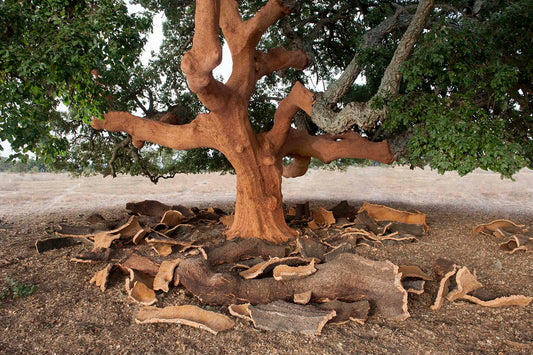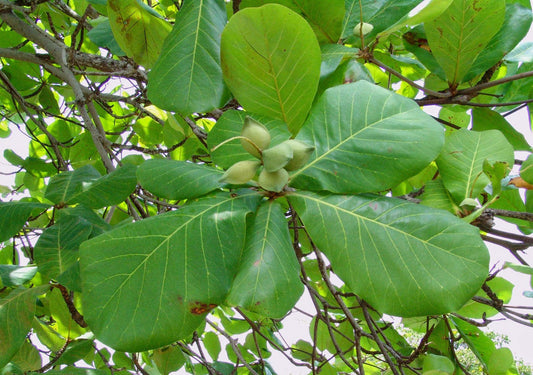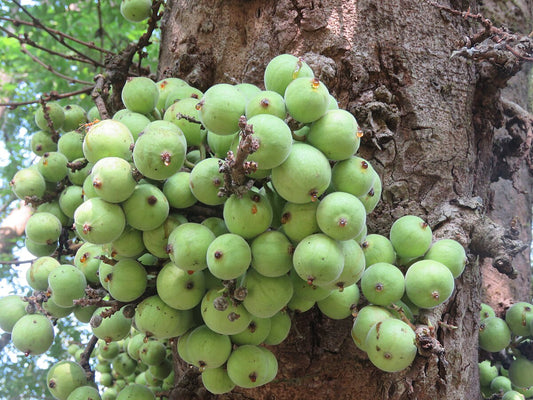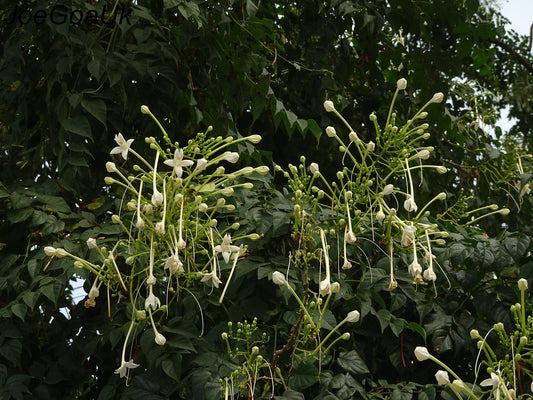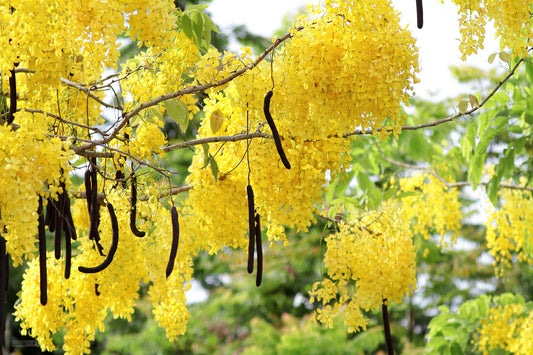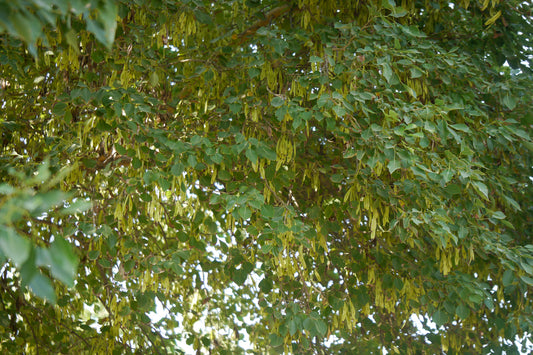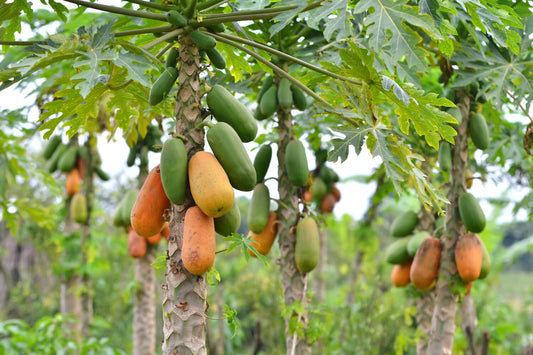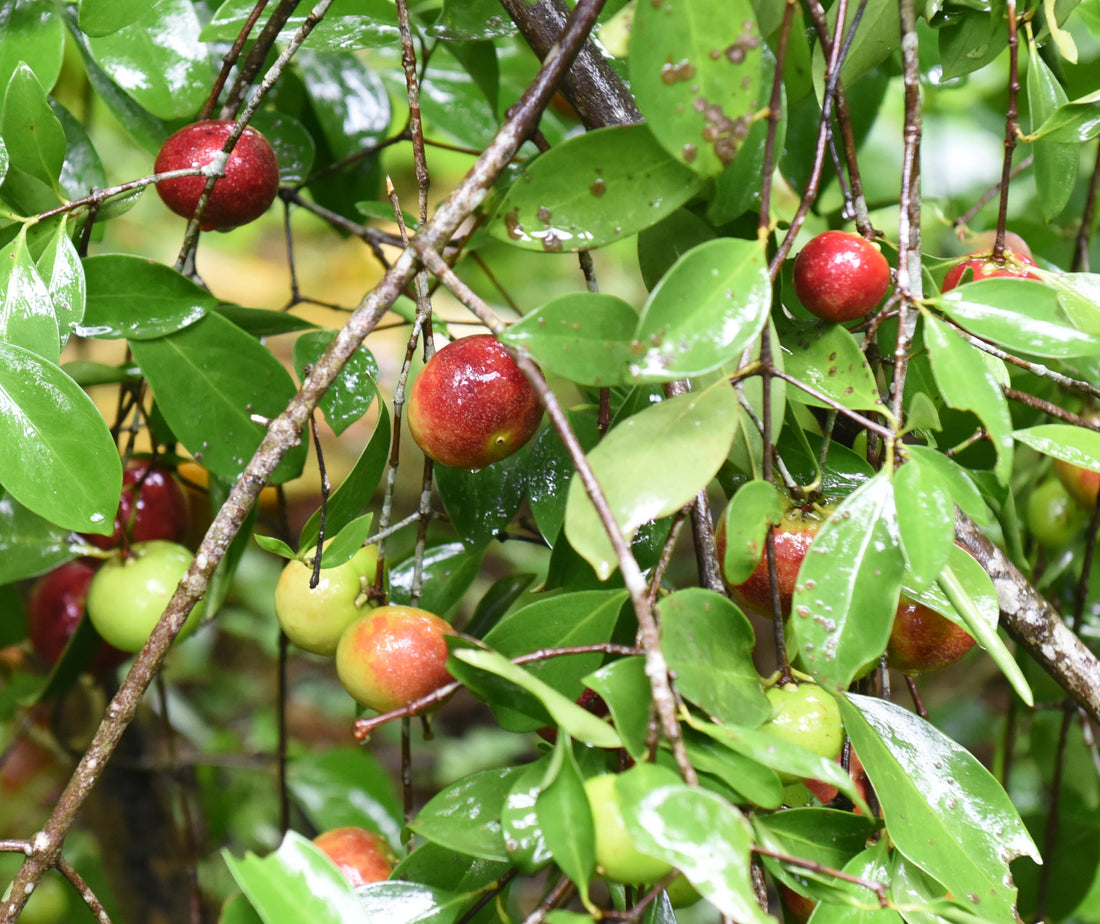

In the rich mosaic of botanical wonders, the Kokam Tree, scientifically known as Garcinia indica or Kokum, emerges as a natural tapestry of culinary excellence and cultural heritage. This versatile tree, adorned with deep purple fruits and glossy green leaves, not only adds flavor to cul Read more
Trending
Trees for Corporates
Kokam Tree
You may also like
Corporate Plantations
Kokam Tree Facts
Discover intriguing facts about the Kokam tree, known for its sour-sweet fruits and medicinal properties. Learn about its botanical characteristics, including its evergreen foliage and small, purple fruits, and its importance in traditional cuisines and medicine.
Kokam Tree Benefits
Explore the culinary, medicinal, and economic benefits of the Kokam tree, prized for its flavorful fruits and versatile uses. From adding tangy flavor to dishes to providing remedies for digestive issues and skin ailments, the Kokam tree offers a range of health and culinary benefits.
Kokam Tree Symbolism
Delve into the symbolism associated with the Kokam tree in Indian culture and folklore, where it represents vitality, prosperity, and rejuvenation. Discover its role in rituals and ceremonies, where its fruits are offered as auspicious symbols of abundance and well-being.
Kokam Tree Culinary Uses
Learn about the culinary uses of Kokam fruits in traditional cuisines, particularly in regions like the Konkan coast of India. Explore recipes for refreshing beverages, tangy chutneys, and savory dishes infused with the unique flavor of Kokam, showcasing its versatility in cooking.
Kokam Tree Medicinal Uses
Explore the medicinal properties and therapeutic uses of different parts of the Kokam tree, including its fruits, bark, and leaves. Discover traditional remedies for digestive disorders, inflammation, and skin conditions, highlighting its significance in indigenous medicine systems.
Kokam Tree Cultivation
Gain insights into the cultivation practices and growing conditions required for Kokam trees, particularly in tropical and subtropical regions. Learn about soil requirements, irrigation techniques, and pruning methods to maximize fruit production and tree health.
Kokam Tree Conservation
Examine the conservation challenges facing the Kokam tree due to habitat loss, overharvesting, and climate change. Learn about efforts to protect and preserve this valuable species through sustainable harvesting practices, habitat restoration, and community-based conservation initiatives.
Kokam Tree Habitat
Explore the natural habitat preferences and distribution patterns of the Kokam tree, thriving in coastal regions, evergreen forests, and agroforestry systems. Understand its ecological role in supporting biodiversity and enhancing ecosystem resilience in diverse landscapes.
Kokam Tree Traditional Knowledge
Discover the traditional knowledge and cultural practices associated with the Kokam tree, passed down through generations of indigenous communities. Explore folklore, rituals, and culinary traditions that celebrate the Kokam tree's role in local culture and identity.
Kokam Tree in Modern Applications
Explore the modern applications of Kokam products in food, beverage, pharmaceutical, and cosmetic industries. Learn about innovative uses of Kokam extracts, oils, and powders in diverse products, showcasing its potential for economic development and market diversification.
FAQ
What is a Kokam tree?
The Kokam tree, scientifically known as Garcinia indica, is a fruit-bearing tree native to the Western Ghats region of India, prized for its tart and tangy berries.
How tall does a Kokam tree grow?
Kokam trees are small to medium-sized evergreen trees, typically reaching heights of 5 to 15 meters.
What are the medicinal properties of Kokam?
Kokam possesses various medicinal properties, including its use in traditional medicine for treating digestive disorders, skin ailments, and as a natural coolant during hot weather.
When does the Kokam tree bear fruit?
Kokam trees bear fruit during the summer months, with the berries ripening to a deep red color.
What is the significance of Kokam in Indian cuisine?
Kokam is widely used in Indian cuisine, especially in coastal regions, where its berries are used to prepare refreshing drinks, curries, chutneys, and preserves.
How is Kokam beneficial for health?
Kokam is rich in antioxidants and vitamins, known for its ability to aid digestion, alleviate acidity, and promote overall well-being.
Can Kokam be grown in home gardens?
Yes, Kokam trees can be cultivated in home gardens, provided there is enough space and suitable climate conditions, particularly in warm and humid regions.
How to propagate Kokam trees?
Kokam trees can be propagated through seeds or by grafting onto suitable rootstock, with seeds being the most common method.
What type of soil does Kokam prefer?
Kokam thrives in well-drained soils with good organic content, preferring sandy or loamy soils with a slightly acidic to neutral pH.
Is Kokam drought-tolerant?
Kokam exhibits moderate drought tolerance once established, but regular watering is essential, especially during its initial growth stages and fruit development.
Are there any pests or diseases that affect Kokam trees?
Kokam trees are relatively resistant to pests and diseases; however, they may occasionally face issues such as fruit rot or infestation by fruit flies.
How long does it take for a Kokam tree to mature?
Kokam trees typically take around 4 to 6 years to reach maturity and start bearing fruit.
Can Kokam trees be pruned?
Yes, Kokam trees can be pruned to maintain shape, remove dead or diseased branches, and promote healthy fruit production.
Are there any restrictions on planting Kokam trees?
In some regions, there may be regulations regarding the planting of Kokam trees due to their potential invasiveness or impact on native ecosystems.
What is the ideal climate for Kokam cultivation?
Kokam trees thrive in warm, tropical climates with moderate rainfall, although they can adapt to various climatic conditions.
How do you care for a newly planted Kokam tree?
Newly planted Kokam trees require regular watering, mulching, and protection from pests and diseases until they become established.
Can Kokam berries be used for any other purposes?
Apart from culinary uses, Kokam berries are also used in Ayurvedic medicine for their medicinal properties and are known to have cooling effects on the body.
Is Kokam wood suitable for any specific purposes?
Kokam wood is moderately hard and durable, often used in carpentry for making furniture, tool handles, and small wooden articles.
Are there any cultural beliefs associated with Kokam trees?
In some cultures, Kokam trees are revered for their medicinal properties and are considered sacred in certain rituals and ceremonies.
How can I contribute to Kokam tree conservation?
You can contribute to Kokam tree conservation by promoting sustainable harvesting practices, supporting local farmers who cultivate Kokam, and raising awareness about the importance of preserving indigenous plant species.
Most Popular
Connect with us
-
👥 Corporates
If you are looking for:
- 🌲 Tree Plantation Events
- 📊 CSR Projects
📧 corporate@growbilliontrees.com
📞 +91 9699723523
💬 WhatsApp (Only): +91 9370599291
🕒 Mon - Sat | 10am - 7pm IST
-
🧩 Tree Plantation NGOs
If you are looking for:
- 💰 Financial Assistance
- 🤝 Operational Support
📧 support@growbilliontrees.com
📞 +91 9699723523
💬 WhatsApp (Only): +91 9370599291
🕒 Mon - Sat | 10am - 7pm IST
-
🌼 Individuals
If you are looking for:
- 👥 Group Tree Plantation Drive
- 🌳 Bulk Tree Plantation
📞 +91 9699723523
💬 WhatsApp (Only): +91 9370599291
🕒 Mon - Sat | 10am - 7pm IST





















